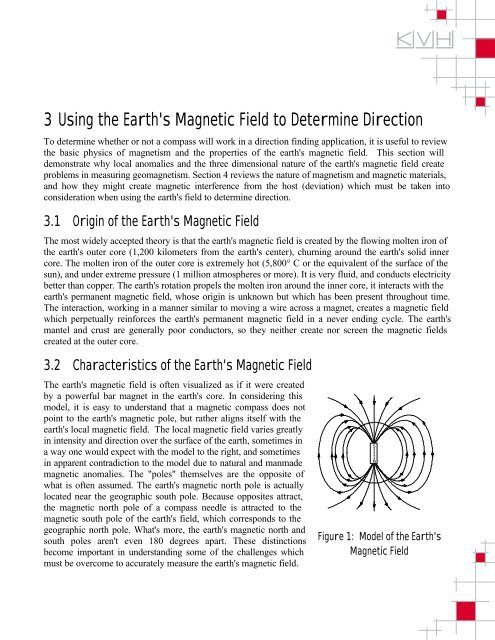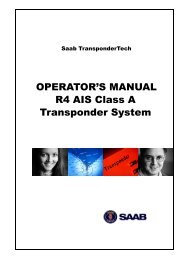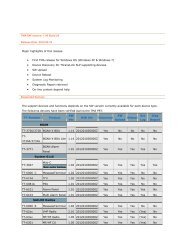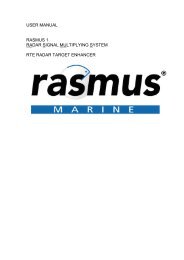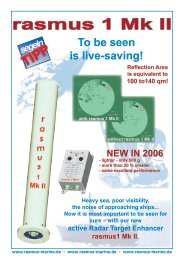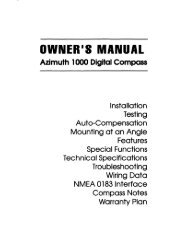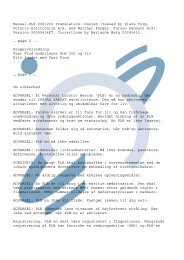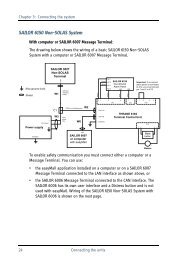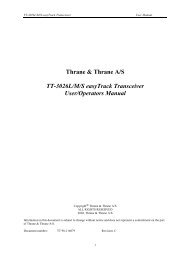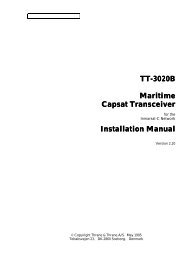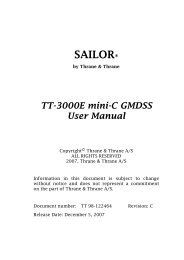Overview of Compass Technology - KVH Industries, Inc
Overview of Compass Technology - KVH Industries, Inc
Overview of Compass Technology - KVH Industries, Inc
You also want an ePaper? Increase the reach of your titles
YUMPU automatically turns print PDFs into web optimized ePapers that Google loves.
3 Using the Earth's Magnetic Field to Determine Direction<br />
To determine whether or not a compass will work in a direction finding application, it is useful to review<br />
the basic physics <strong>of</strong> magnetism and the properties <strong>of</strong> the earth's magnetic field. This section will<br />
demonstrate why local anomalies and the three dimensional nature <strong>of</strong> the earth's magnetic field create<br />
problems in measuring geomagnetism. Section 4 reviews the nature <strong>of</strong> magnetism and magnetic materials,<br />
and how they might create magnetic interference from the host (deviation) which must be taken into<br />
consideration when using the earth's field to determine direction.<br />
3.1 Origin <strong>of</strong> the Earth's Magnetic Field<br />
The most widely accepted theory is that the earth's magnetic field is created by the flowing molten iron <strong>of</strong><br />
the earth's outer core (1,200 kilometers from the earth's center), churning around the earth's solid inner<br />
core. The molten iron <strong>of</strong> the outer core is extremely hot (5,800° C or the equivalent <strong>of</strong> the surface <strong>of</strong> the<br />
sun), and under extreme pressure (1 million atmospheres or more). It is very fluid, and conducts electricity<br />
better than copper. The earth's rotation propels the molten iron around the inner core, it interacts with the<br />
earth's permanent magnetic field, whose origin is unknown but which has been present throughout time.<br />
The interaction, working in a manner similar to moving a wire across a magnet, creates a magnetic field<br />
which perpetually reinforces the earth's permanent magnetic field in a never ending cycle. The earth's<br />
mantel and crust are generally poor conductors, so they neither create nor screen the magnetic fields<br />
created at the outer core.<br />
3.2 Characteristics <strong>of</strong> the Earth's Magnetic Field<br />
The earth's magnetic field is <strong>of</strong>ten visualized as if it were created<br />
by a powerful bar magnet in the earth's core. In considering this<br />
model, it is easy to understand that a magnetic compass does not<br />
point to the earth's magnetic pole, but rather aligns itself with the<br />
earth's local magnetic field. The local magnetic field varies greatly<br />
in intensity and direction over the surface <strong>of</strong> the earth, sometimes in<br />
a way one would expect with the model to the right, and sometimes<br />
in apparent contradiction to the model due to natural and manmade<br />
magnetic anomalies. The "poles" themselves are the opposite <strong>of</strong><br />
what is <strong>of</strong>ten assumed. The earth's magnetic north pole is actually<br />
located near the geographic south pole. Because opposites attract,<br />
the magnetic north pole <strong>of</strong> a compass needle is attracted to the<br />
magnetic south pole <strong>of</strong> the earth's field, which corresponds to the<br />
geographic north pole. What's more, the earth's magnetic north and<br />
south poles aren't even 180 degrees apart. These distinctions<br />
become important in understanding some <strong>of</strong> the challenges which<br />
must be overcome to accurately measure the earth's magnetic field.<br />
S<br />
N<br />
Figure 1: Model <strong>of</strong> the Earth's<br />
Magnetic Field


